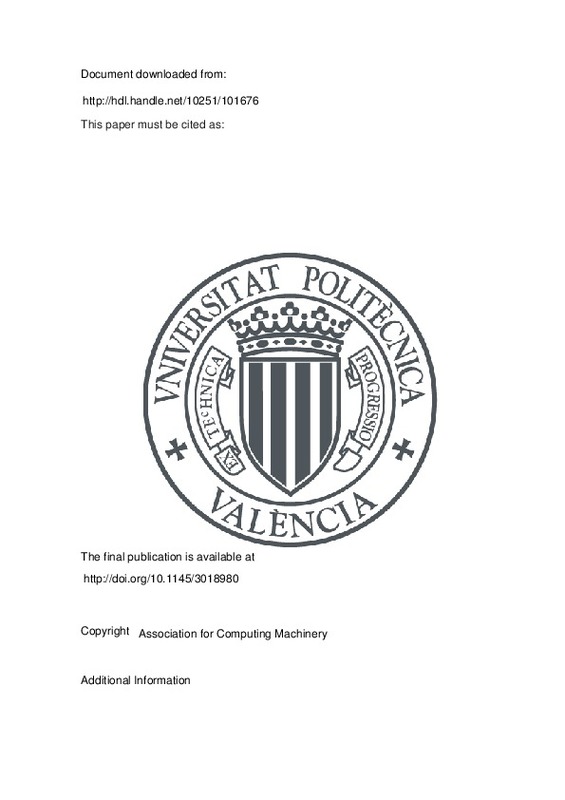Michael Anderson and Susan Leigh Anderson. 2011. Machine Ethics. Cambridge University Press.
Federico Bertola and Viviana Patti. 2016. Ontology-based affective models to organize artworks in the social semantic web. Inf. Process. Manage. 52, 1 (2016), 139--162.
Ruchdee Binmad and Mingchu Li. 2016. Improving the efficiency of an online marketplace by incorporating forgiveness mechanism. ACM Trans. Internet Technol. 17, 1 (2016), 1--20.
[+]
Michael Anderson and Susan Leigh Anderson. 2011. Machine Ethics. Cambridge University Press.
Federico Bertola and Viviana Patti. 2016. Ontology-based affective models to organize artworks in the social semantic web. Inf. Process. Manage. 52, 1 (2016), 139--162.
Ruchdee Binmad and Mingchu Li. 2016. Improving the efficiency of an online marketplace by incorporating forgiveness mechanism. ACM Trans. Internet Technol. 17, 1 (2016), 1--20.
Kim Binsted, Benjamin Bergen, Seana Coulson, Anton Nijholt, Oliviero Stock, Carlo Strapparava, Graeme Ritchie, Ruli Manurung, Helen Pain, Annalu Waller, and Dave O’Mara. 2006. Computational humor. IEEE Intell. Syst. 21, 2 (2006), 59--69.
Cristina Bosco, Viviana Patti, and Andrea Bolioli. 2013. Developing corpora for sentiment analysis: The case of irony and senti-TUT. IEEE Intell. Syst. 28, 2 (2013), 55--63.
Erik Cambria, Björn W. Schuller, Yunqing Xia, and Catherine Havasi. 2013. New avenues in opinion mining and sentiment analysis. IEEE Intell. Syst. 28, 2 (2013), 15--21. http://dx.doi.org/10.1109/MIS.2013.30
Chloé Clavel and Zoraida Callejas. 2016. Sentiment analysis: From opinion mining to human-agent interaction. IEEE Transactions on Affective Computing 7, 1 (2016), 74--93.
Mehdi Dastani and Alexander Pankov. 2016. Other-condemning moral emotions: Anger, contempt and disgust. ACM Trans. Internet Technol. 17, 1 (2016), 1--24.
Pasquale De Meo, Katarzyna Musial-Gabrys, Domenico Rosaci, Giuseppe Sarne, and Lora Aroyo. 2016. Using centrality measures to predict helpfulness-based reputation in trust networks. ACM Trans. Internet Technol. 17, 1 (2016), 1--26.
Bexy Alfonso Espinosa, Emilio Vivancos, and Vicente Botti. 2016. Towards formal modeling of affective agents in a BDI architecture. ACM Trans. Internet Technol. 17, 1 (2016), 1--23.
Brian J. Fogg. 1999. Persuasive technologies. Commun. ACM 42, 5 (1999), 27--29.
Jonathan Gratch and Stacy Marsella. 2004. A domain-independent framework for modeling emotion. Cognit. Syst. Res. 5, 4 (2004), 269--306.
Marco Guerini and Oliviero Stock. 2005. Toward ethical persuasive agents. In Proceedings of the IJCAI Workshop on Computational Models of Natural Argument. Edinburgh, Scotland.
Arno Hartholt, David Traum, Stacy C. Marsella, Ari Shapiro, Giota Stratou, Anton Leuski, Louis-Philippe Morency, and Jonathan Gratch. 2013. All together now. In Proceedings of the International Workshop on Intelligent Virtual Agents. Springer, 368--381.
Delia Irazú Hernańdez Farías, Viviana Patti, and Paolo Rosso. 2016. Irony detection in Twitter: The role of affective content. ACM Trans. Internet Technol. 16, 3, Article 19 (2016), 24 pages.
Delia Irazú Hernández Farías and Paolo Rosso. 2016. Irony, sarcasm, and sentiment analysis. In Sentiment Analysis in Social Networks, Federico Pozzi, Elisabetta Fersini, Bing Liu, and Enza Messina (Eds.). Elsevier, Chapter 7, 113--128.
Caroline Langlet and Chloé Clavel. 2016. Grounding the detection of the user’s likes and dislikes on the topic structure of human-agent interactions. Knowl. Based Syst. 106 (2016), 116--124.
Maurizio Mancini, Beatrice Biancardi, Florian Pecune, Giovanna Varni, Yu Ding, Catherine Pelachaud, Gualtiero Volpe, and Antonio Camurri. 2016. Implementing and evaluating a laughing virtual character. ACM Trans. Internet Technol. 17, 1 (2016), 1--22.
Rosa Meo and Emilio Sulis. 2016. Processing affect in social media. A comparison of methods to distinguish emotions in tweets. ACM Trans. Internet Technol. 17, 1 (2016), 1--25.
Myriam D. Munezero, Calkin Suero Montero, Erkki Sutinen, and John Pajunen. 2014. Are they different? Affect, feeling, emotion, sentiment, and opinion detection in text. IEEE Trans Affective Comput. (2014).
Malvina Nissim and Viviana Patti. 2016. Semantic aspects in sentiment analysis. In Sentiment Analysis in Social Networks, Federico Pozzi, Elisabetta Fersini, Bing Liu, and Enza Messina (Eds.). Elsevier, 31--48.
Jahna Otterbacher, Chee Siang Ang, Marina Litvak, and David Atkins. 2016. Show me you care: Trait empathy, linguistic style and mimicry on Facebook. ACM Trans. Internet Technol. 17, 1 (2016), 1--22.
Ana Paiva. 2011. Empathy in social agents. Int. J. Virtual Reality 10, 1 (2011).
Catherine Pelachaud. 2009. Modelling multimodal expression of emotion in a virtual agent. Philosophical Transactions of the Royal Society B: Biological Sciences 364, 1535 (2009), 3539--3548.
Robert Plutchik. 1980. A general psychoevolutionary theory of emotion. In Emotion: Theory, Research, and Experience: Vol. 1. Theories of Emotion, R. Plutchik and H. Kellerman (Eds.). Academic Press, New York, 3--33.
Federico Alberto Pozzi, Elisabetta Fersini, Enza Messina, and Bing Liu. 2016. Sentiment Analysis in Social Networks, 1st Edition. Morgan Kaufmann, Elsevier.
Antonio Reyes, Paolo Rosso, and Davide Buscaldi. 2012. From humor recognition to irony detection: The figurative language of social media. Data Knowl. Eng. 74 (2012), 1--12.
Paolo Rosso, Cristina Bosco, Rossana Damiano, Viviana Patti, and Erik Cambria. 2016. Emotion and sentiment in social and expressive media: Introduction to the special issue. Inf. Process. Manage. 52, 1 (2016), 1--4.
Klaus R. Scherer. 2005. What are emotions? And how can they be measured? Soc. Sci. Inf. 44, 4 (2005), 695--729.
June Price Tangney, Jeff Stuewig, and Debra J. Mashek. 2007. Moral emotions and moral behavior. Ann. Rev. Psychol. 58 (2007), 345.
Beste Filiz Yuksel, Penny Collisson, and Mary Czerwinski. 2016. Brains or beauty: How to engender trust in user-agent interactions. ACM Trans. Internet Technol. 17, 1 (2016), 1--20.
[-]







![[Cerrado]](/themes/UPV/images/candado.png)


